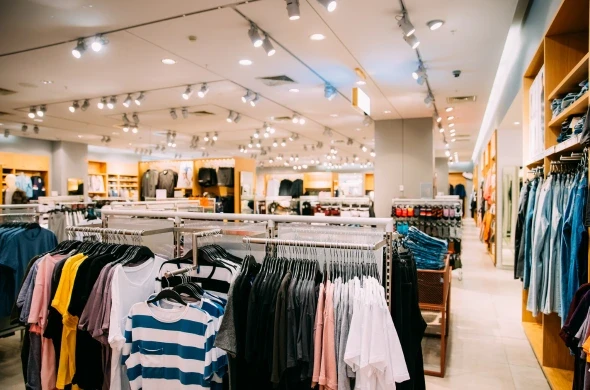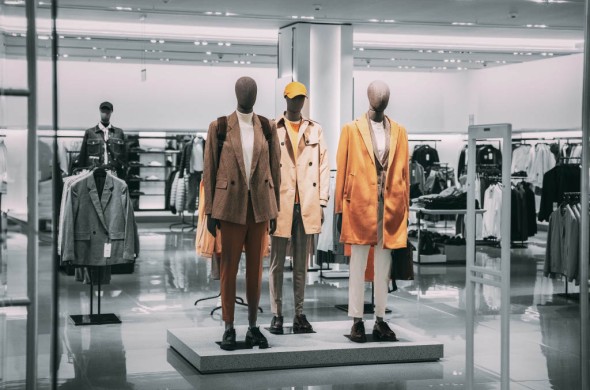The digital revolution that saw e-commerce ride to the top of the retail sector is far from over. While in-person shopping experiences have returned to pre-pandemic levels, many consumers have come to expect an omnichannel experience that allows them to receive the same customer experience both on and offline.
Looking ahead, the future of retail design will be rooted in artificial intelligence, personalized experiences, and augmented reality. By connecting the physical with the digital worlds, companies can craft customizable journeys that guide their buyers through a unique experience that builds brand equity and boosts each customer’s lifetime value.
What Emerging Trends Will Shape the Future of Retail?
Artificial intelligence (AI) and augmented reality (AR) will be the key players looking ahead in commerce. Consumers will expect to have more interactive shopping experiences, and both AI and AR serve this purpose.
Artificial intelligence can offer detailed information about products, make personalized recommendations, and take pressure off staff by off-loading queries and automating workflows.
Meanwhile, augmented reality gives buyers the option to try before they buy — without leaving home. In many dressing rooms around the world, AR technology is even allowing buyers to virtually try on clothes; AR dressing rooms not only improve sanitation but also improve store flow and reduce burdens on staff.
Livestream Commerce
The future of shopping isn’t just in-person. Livestreaming will play a large role in future sales with brands electing influencers as ambassadors to promote their products. Livestreaming gives customers an interactive experience that feels akin to having a friend give you personal recommendations when you’re shopping.
Live shopping first rose to popularity in China. Today, it attracts 55% of the entire country’s internet users, or roughly 597 mln people. By 2026, livestream shopping in China is expected to surpass 8.2 trillion yuan (1.13 Bln USD).
Live shopping boosts conversion rates by up to 30%, offering consumers interaction and a blend of user-generated content with expert retail support.
Endless Aisles Will Help Capture More Customers
When someone visits a store in-person only to find their desired products sold-out, they can be automatically referred to an online order screen via QR code or an in-store kiosk or tablet. The concept of endless aisles allows consumers to make purchases even when physical merchandise is unavailable in stores.
Rather than wait to make an order when they return home or be given the extra task of looking up a product online, they can seamlessly continue their purchase right in the aisle.
Easy Return Systems Will Enhance Customer Satisfaction
Improving your return process can boost customer satisfaction and increase loyalty. Research shows 92% of consumers will make a repeat purchase if they find the return process easy.
In addition to having return policies clearly displayed at critical touchpoints, you can focus on streamlining the return process. Make it simpler for customers to make returns both in-person and online.
Offer multiple return methods and ensure customer support is easily accessible as customers navigate their return. This will help boost loyalty, increase engagement, and retain customers even after they made an unsatisfactory purchase.
Sustainability Will Shine at the Forefront of Retail Design
More than ever, customers care about the products they buy. It’s not enough for a retail store to have visual appeal. Their merchandise should highlight the company’s commitment to people and the planet.
Designing displays should incorporate eco-friendly elements and play up any environmentally conscious features that can drive customers to convert and feel proud of their contribution in supporting a store’s mission to care for the planet.
One way to lean into the sustainability values of the current generation is by incorporating natural elements into your retail space. These include organic materials and plants to elevate the ambience.
Furthermore, stores should take available opportunities to promote their commitment to sustainability. This could include signage on key displays and at checkout that remind the customer of their own impact when patronizing your business.
How Does Retail Design Impact the Consumer Experience?
Retail layout is far more than functional; it has psychological influences that can affect what people buy and how they make purchases. The goal of any successful retail design is to reduce buying barriers and promote a seamless shopping experience. Helping your customers overcome challenges they face online, and in-person ultimately leads to greater conversions, increased revenue growth, and enhanced brand reputation.
In a 2023 article for Forbes, author Clara Ludmir explored how stores are converging the physical retail space with the expected convenience of the digital world. She references a survey by the International Council of Shopping Centers that highlighted consumer trends among Gen Z. This generation likes to shop both online (95%) and in-person (97%), which means retailers have to be conscious of how they are creating a seamless experience at every point of the funnel for consumers on and offline.
Retail design in the future will have to emphasize the harmonious world we live in — one where the metaverse and real world interact and influence one another. In addition to creating more fluid shopping experiences, retailers must also prioritize designs with interactive value add-ons.
Consider a plant shop that carries customers from an interactive plant matchmaking quiz to a boutique that lets them design and build their own plant, including choosing its soil, pot, and selecting any additional plant care accessories they may want to bring home with them.
Merging Retail Design and Customer Experience
Imagine taking customers on a journey rather than simply taking them from one stage of the funnel to the last. Instead of focusing solely on closing sales, retailers need to optimize their physical and digital spaces to cultivate memorable experiences that keep customers returning and increase word-of-mouth and social referrals.
By seamlessly integrating online and offline moments, promoting consumer values through displays, and personalizing the customer experience whenever possible, retailers can craft memorable buying journeys that leave lasting impressions on consumers.
Read our latest insights, ideas, and perspectives that explore the trends shaping the future of business and society. Our consultancy services go hand-in-hand with these insights, confirming our position as industry leaders. Get in touch to find out more about our consulting services and industry expertise.



